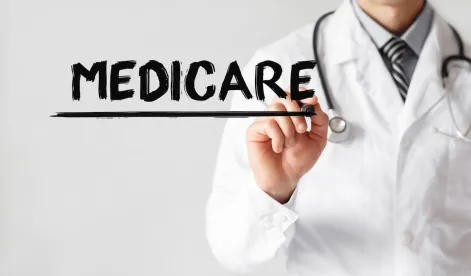On November 18, 2019, the Centers for Medicare & Medicaid Services (CMS) proposed changes to federal Medicaid rules that, if implemented, would affect billions of dollars of Medicaid payments nationwide, creating new uncertainty for state budgets and for Medicaid providers. The proposed rulemaking, entitled the Medicaid Financing and Accountability Regulation or MFAR, would broadly expand federal oversight over Medicaid supplemental payments and rewrite key rules governing how those payments are structured, financed, and distributed. In a press release announcing the MFAR, CMS called the rulemaking an effort to “strengthen the fiscal accountability of the Medicaid program and ensure that state supplemental payments and financing arrangements are transparent and value-driven.”
New Scrutiny of Supplemental Payments
Supplemental payments are a unique feature of the Medicaid program, which are largely driven by the program’s reliance on a mix of state, local, and federal funding. While state governments establish reimbursement methodologies for Medicaid providers, the federal government provides matching funds if the expenditures meet federal requirements. As a result of state budget pressures, Medicaid payments to providers are frequently limited to less than the amounts the federal government would recognize. Supplemental payments allow states to increase Medicaid payments above the base rates up to the federal limits, often relying on sources of funding other than state general funds (e.g., local funds or provider taxes) for the non-federal component of those payments. These payments may include so-called “Upper Payment Limit” (UPL) payments, which increase Medicaid rates to a class of providers (for example, private hospitals) to the limits established by federal rules, as well as payments made pursuant to demonstration projects. By CMS’ estimates, up to 20% of aggregate nationwide Medicaid payments to providers take the form of supplemental payments.
In the MFAR, CMS proposes that all supplemental payments, as defined in the rule, would need to be reauthorized by the state and CMS within either two or three years of the effective date of the rule, depending on how recently they were approved. The renewal of the supplemental payments, or the authorization of new supplemental payments, would be subject to enhanced scrutiny by CMS. To request authorization for a supplemental payment, the state would need to include an explanation of the purpose and intended effects of the payment as well as a monitoring plan and a comprehensive description of the methodology for calculating and distributing the payment. These rules, if implemented, would require states to work with CMS to continue supplemental payment methodologies worth billions of dollars.
In addition, CMS proposes expansive new reporting requirements for and federal oversight of the entities receiving supplemental payments. Each quarter, the state would be required to identify each provider that received a supplemental payment, including their name, address, NPI, EIN, the service type for which the payment was made, and the specific amount of the supplemental payment. Each year, the state would supply, for review by CMS, aggregate and provider-level information, including the amount of supplemental payments received, the total Medicaid payments received by each provider receiving a supplemental payment, and their Medicaid units of care furnished (e.g., hospital days or discharges). The state would also provide aggregate and provider-level reports for each provider that contributes to the non-federal share of the payments.
The MFAR also would impose, for the first time, specific caps on the amount of supplemental payments that a Medicaid practitioner, such as a physician or other licensed professional, may receive. Under the MFAR, CMS would limit supplemental reimbursement to health care practitioners to 50% of the total fee-for-service base payments to those practitioners, or 75% if the practitioner is operating in a geographic health professional shortage area (HPSA) or Medicare-defined rural area. CMS estimated that this requirement alone would reduce practitioner Medicaid payments in 21 states by a total of $222 million, unless the states offset this loss by increasing base payments.
Restrictions on Using Local Funds as the Non-Federal Share
For decades, the Medicaid statute has allowed state Medicaid agencies to rely on contributions from other state agencies or from local governmental entities, such as counties or hospital districts, to fund the non-federal portion of Medicaid expenditures. In the MFAR, CMS proposes to rewrite the regulation addressing which funds may be contributed as the non-federal share, and would introduce new requirements and restrictions. These changes could affect the financing of billions of dollars of locally supported Medicaid payments and will require careful evaluation by states and other governmental entities responsible for funding their Medicaid program.
The MFAR would require funds transferred by a governmental entity to the state for use as the non-federal share (an intergovernmental transfer or IGT) to be “derived from state or local taxes” or appropriated to a state university teaching hospital. While the proposed regulation does not define when revenue is “derived” from taxes, or explain how this determination will be made, the new language could signal additional administrative requirements and federal oversight of entities contributing IGTs.
In some cases, governmental entities such as public hospitals certify that they have expended public funds providing Medicaid services, and are able to receive federal matching dollars for those expenditures (certified public expenditures or CPEs). The MFAR also proposes new requirements for entities utilizing CPEs. Under the proposed rule, all CPE-based claims would need to be processed through the Medicaid claiming systems in a manner that identifies specific services provided to specific enrollees. States would also be required to implement interim rates for governmental providers receiving CPE-based payments using the provider’s most recently filed cost reports, and to implement final settlement of those interim rates to the governmental provider’s actual cost within 24 months of the cost report year end.
Changes to Provider Taxes
States historically have used health-care related taxes to finance the non-federal share of Medicaid payments. In 1991, Congress imposed restrictions on state tax programs, including which classes of providers could be subject to taxes, the requirement that taxes be broad-based and uniform, and the prohibition on hold-harmless arrangements in which collected taxes are returned directly or indirectly to tax payers. The MFAR proposes to amend the regulations that implement these restrictions to address CMS’ concern that state tax programs continue to place an undue burden on the Medicaid program and circumvent the restrictions on hold-harmless arrangements.
The proposed MFAR amendments include modifications relating to assessing whether a tax is health-care related, whether a proposed tax program qualifies for a waiver of the broad based or uniformity requirements as generally redistributive, and whether a proposed tax contains a prohibited hold-harmless provision. Significantly, the MFAR seeks to arm CMS with the ability to assess “the overall impact of an arrangement, considering the actions of all of the entities participating in the arrangement,” including transactions among participating entities. If the rule is finalized, state provider tax arrangements may need to be restructured or the Medicaid payments they support discontinued.
New Authority to Prevent Non-Bona Fide Provider-Related Donations
Federal law restricts the ability of Medicaid providers and related entities to donate funds to state or local government, if they will be “held harmless” for those donations through Medicaid or non-Medicaid payments. In the MFAR, CMS expresses a concern that states, localities, and health care providers have “designed complex financing structures to mask non-bona fide, provider-related donations,” including arrangements where private providers transfer licenses or donate services to a governmental entity at a below market rate, and in turn receive enhanced Medicaid revenue.
To clarify the scope of CMS’ review in such cases, the MFAR proposes new regulatory language clarifying that CMS will evaluate provider-related donations based on whether the totality of the circumstances demonstrate that the net effect of the arrangement results in a reasonable expectation that the provider, or related entity, will be held harmless for its donation. This proposed new language would expand the current regulatory language, which focuses on whether the arrangement “directly or indirectly guarantees” the donating entity is held harmless.
Additional Requirements for Publicly-Owned, Privately-Operated Facilities
Long-standing CMS policy has divided Medicaid providers into different classes, namely: private providers; state-owned or operated providers; and non-state governmental owned or operated providers. The classification of a provider into one of these classes often determines the ability of the provider to receive Medicaid supplemental payments, as well as its ability to provide IGTs or CPEs. In the MFAR, CMS indicates its intent to impose greater scrutiny on these classifications by reviewing the “identity and character” of any entity sharing responsibility for owning or operating the provider facility. Under this new standard, publicly-owned but privately-operated entities could be treated as private providers, which in some cases would result in a loss of eligibility to receive supplemental payments and to provide the non-federal share.
DSH Payments
The FMAR also proposes changes intended to streamline the identification of amounts identified through the Disproportionate Share Hospital (DSH) audit process. The proposed changes would clarify that the amounts identified in the audit finding are overpayments that must be shared with the federal government.
Retention Requirements and State Administrative Fees
New language in the MFAR would impose a requirement for Medicaid payment methodologies to allow providers to “receive and retain” the full amount of the Medicaid payment for services. To enforce this requirement, CMS proposes to examine “any associated transactions” related to the provider’s Medicaid payment to ensure that the state’s expenditure is appropriate. For example, CMS specifically indicates that administrative fees collected by the state based on the amount the Medicaid provider receives would be prohibited.
Next Steps
If implemented, the MFAR would usher in a new era of enhanced federal scrutiny over Medicaid payment methodologies. These changes are certain to draw opposition from state Medicaid agencies and governors as well as from Medicaid providers, as any withdrawal of federal funds will have significant financial impact on state budgeting. Stakeholders’ comments may be submitted on the MFAR until January 17, 2020. Stakeholders should also anticipate potential legal and political efforts to prevent the implementation of the MFAR.






 />i
/>i

